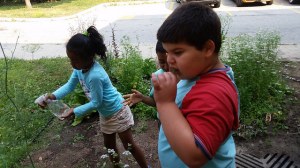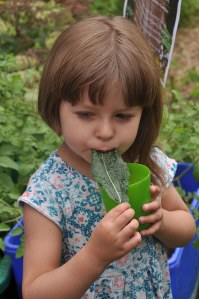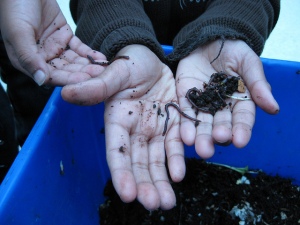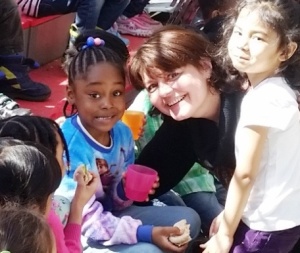Five-year-olds don’t always want to eat their vegetables. But when they’ve spent time exploring a schoolyard garden and picking their own, eating vegetables is suddenly exciting. Call it a “Salad Celebration,” and orders for a “double-double black magic kale” start rolling in.
More than 160 children and parents a week enjoyed summer activities hosted by Green Thumbs this year at Winchester and Lord Dufferin Public Schools. Celebrating local food in our downtown eastside community meant trying new textures and flavours as part of learning how to identify edible plants and understand what makes them healthy for us. “I am a carrot,” said one 6-year-old, when told that he is what he eats. “I can always find this type of root in my fridge!”
Ecosystem learning
Healthy food grows best in a healthy ecosystem, where biodiversity can thrive. Investigating worms and insects and how they build their homes in the Green Thumbs gardens was another popular summer activity. “I am certain that we are growing little green thumbs and a healthy community that appreciates the local environment,” said Food and Garden Educator, Ivanna Prots. “I believe we are raising the next generation to solve environmental problems.”
“I hope we can do the same program again next year,” one teacher wrote following a day in the garden. But one child said it best: “I would like to stay with Green Thumbs forever!”
Green Thumbs is deeply grateful to our 2014-2015 Food and Garden Educator, Ivanna Prots. As a Master of Science in Botany and Zoology with 10+ years of experience working with students of all ages and learning styles, Ms. Prots brought a respectful and empathetic teaching style and broad-based knowledge of environmental issues relating to soil, plants, animals, and insects to our garden and greenhouse programs. Experienced in both curriculum design and delivery for large and small groups, she is particularly gifted in using garden-and-art-based learning to open windows for students with special needs, including those with Autism Spectrum Disorders.
Ivanna Prots is off on new adventures, and we wish her the very best!


























